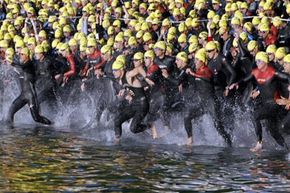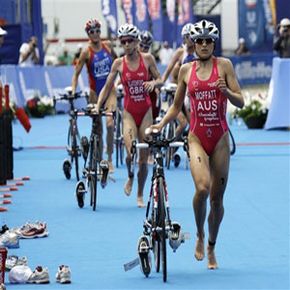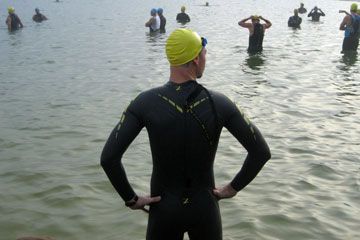Triathlons are the ultimate endurance challenge. Participants swim, bike and run in an all-day race where even the world's fastest times still clock in at well above eight hours. The first modern triathlon was held on Sept. 24, 1974 and organized by the San Diego Track & Field Club [source: ITU]. The multi-sport competition proved an instant success, quickly growing to hundreds of sanctioned races worldwide and becoming an official Olympic sport at the 2000 summer games in Sydney.
Since 1989, the competitive sport of triathlon has been governed on a global level by the International Triathlon Union (ITU), which crowns world champions every year in 70 different race categories (including junior, under 23, elite and paratriathlon) and age groups (from 16 to 84-year-olds) [source: ITU]. There are also 120 National Federations that partner with ITU, including USA Triathlon, the sanctioning body for all American professional and amateur races.
Advertisement
Because of the highly competitive and physically intense nature of the sport, the ITU and USA Triathlon have established lengthy and detailed rules to make sure that all sanctioned races are safe, fair and fun for all participants.
Like athletes who compete in other organized sports, triathlon participants are assessed penalties for violating any of the published rules. For minor infractions, like unintentionally blocking of a passing lane or a false start, the triathlete might be instructed by a technical official to stop and wait for a set period of time (one to four minutes). Most ITU-sanctioned races have special "penalty boxes" located near the transition zones for athletes to serve their time [source: ITU].
For more flagrant or repeated infractions, triathletes may be disqualified from the race, suspended from further races for a set time or permanently expelled from all future competitions. In the name of fairness, penalized triathletes are allowed to protest or appeal their penalties with the ITU Competition Jury.
Even though there are rare instances of illegal doping and wildly unsportsmanlike behavior, the most common triathlon rule violations usually pertain to equipment and uniform violations. We'll start our examination of triathlon rules with the first leg of the race: swimming.
Advertisement




